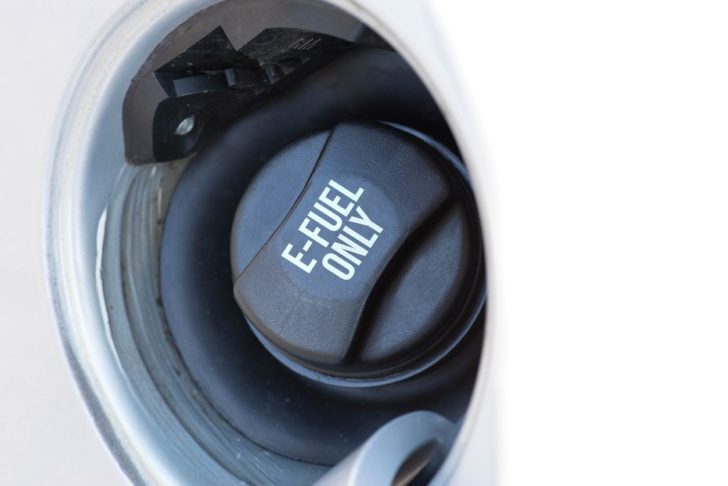Imagine a world where transportation is not only more sustainable, but also compatible with existing infrastructure. E-fuels could be the answer to this vision, offering a carbon neutral alternative to traditional fossil fuels. In this blog post, we will explore the potential of e-fuels in decarbonizing various industries, the production processes, and how they compare to electric vehicles. Get ready to dive into the fascinating world of e-fuels and their potential to revolutionize the way we power our vehicles.
Table of Contents
Key Takeaways
E-Fuels provide a carbon-neutral alternative to traditional fossil fuels, offering potential environmental benefits and the ability to decarbonize various industries.
Policies and regulations play an important role in promoting e-fuel adoption by incentivizing investments and technologies needed for successful implementation.
Companies and research institutions are driving development of e fuel production processes such as Power to Gas & Liquid methods with renewable energy sources.
Understanding E-Fuels: Synthetic Alternatives to Fossil Fuels

E-fuels, also known as synthetic fuels, are created through electrolysis. This process involves using renewable electricity to divide water molecules into hydrogen and oxygen. Green hydrogen created through electrolysis is the raw material used in the synthesis process. CO2 is captured from various sources and then combined with green hydrogen. This new technique provides a carbon-neutral solution to traditional fossil fuels for combustion engines, which could cut down CO2 emissions from the existing passenger car fleet, without the need to replace every vehicle with an electric one.
However, the e-fuel market is still in its infancy and faces competition from electric vehicles. When e-fuels are combusted, toxic nitrogen dioxide and carcinogenic particles are emitted, unlike battery electric vehicles that produce no tailpipe emissions.
Despite these challenges, e-fuels have the potential to benefit combustion engine vehicles, particularly internal combustion engines, by reducing CO2 emissions and offering a more sustainable solution for transportation.
The E-Fuel Production Process
E-fuels are produced through either Power-to-Gas or Power-to-Liquid processes, using renewable energy and CO2 captured from the atmosphere or industrial plants. These methods transform renewable electricity into synthetic fuels that can be used as alternatives to conventional fossil fuels, including natural gas.
In subsequent sections, we will examine in detail the Power-to-Gas and Power-to-Liquid methods, while also discussing their applications across different industries.
Power-to-Gas Method
The Power-to-Gas method involves producing synthetic methane or hydrogen for use in gas-based applications. Renewable or surplus electricity is utilized to generate hydrogen through water electrolysis, which can then be stored and employed as a clean energy carrier. The applications of the Power-to-Gas method extend to transportation, heating, and electricity production, making it a versatile and sustainable option for various industries.
Additionally, the Power-to-Gas method can:
Lessen fossil fuel dependence
Aid the shift towards a cleaner and more sustainable energy future
Harness renewable energy sources like wind and solar power
Present a promising alternative to conventional fuels for powering vehicles and industries.
Power-to-Liquid Method
The Power-to-Liquid method is a process that produces synthetic liquid fuels, such as e-diesel or e-gasoline, for use in traditional combustion engines. This method uses renewable energy, water, and carbon dioxide to produce alternative liquid fuel like methanol or synthetic liquid hydrocarbon fuels.
The Power-to-Liquid method offers several advantages, including:
The capability to generate synthetic fuels with a minimal carbon footprint
The capacity to store energy for extended durations
The possibility of reducing reliance on fossil fuels.
The Power-to-Liquid method confronts hurdles such as:
High production costs
The need for significant amounts of energy and water
The process yields a considerable volume of carbon dioxide, necessitating its capture and storage.
Despite these challenges, the Power-to-Liquid method holds promise for the decarbonization of various industries, particularly those that are difficult to electrify.
E-Fuels vs. Electric Vehicles: A Comparison
While electric vehicles are the primary competition for e-fuels in the transportation sector, e-fuels may offer advantages in sectors that are difficult to electrify, given their compatibility with existing infrastructure and engines. For example, it is estimated that only 2% of Europe’s cars will be able to utilize synthetic fuels by 2035, as electric vehicles continue to dominate the market. However, Audi CEO Markus Duesmann stated that synthetic fuel “will not play an important role in the medium-term future of passenger cars”.
Regardless of this competition, e-fuels still have potential in sectors that are tough to electrify, such as aviation, shipping, and heavy-duty transportation. In these industries, the high energy density and carbon neutral nature of e-fuels can offer a more sustainable alternative to conventional fossil fuels, helping to reduce the overall carbon footprint of transportation and support global decarbonization efforts.
The Role of E-Fuels in Decarbonizing Various Industries
E-fuels can play a vital role in decarbonizing industries such as aviation, shipping, and heavy-duty transportation by providing a high-energy-density, carbon-neutral fuel alternative. Some policymakers argue that the limited supply of e-fuels should be reserved for these hard-to-decarbonize sectors, as electrification is challenging due to the weight of batteries and the inability of electric batteries to power long voyages.
Subsequent sections will delve into the possible applications of e-fuels in the aviation, maritime, and heavy-duty transportation sectors, and their capability to revolutionize these industries.
Aviation Industry
E-fuels could provide up to 40% of aviation energy demand by 2070, significantly decreasing the industry’s carbon footprint. By offering a more sustainable alternative to traditional fossil fuels, e-fuels can help decarbonize the aviation industry and support global efforts to address climate change.
E-fuels can be used as drop-in fuels, requiring no modifications to existing aircraft engines. This compatibility with current infrastructure enables the aviation industry to reduce its carbon emissions without the need for costly upgrades or replacements, making e-fuels an attractive solution for airlines and aircraft manufacturers.
Maritime Industry
The maritime industry can benefit from e-fuels in the following ways:
E-fuels can provide a cost-effective and efficient alternative to traditional fossil fuels.
Electrification of ships is challenging due to the size and complexity of the vessels and the requirement for extended voyages.
E-fuels can help reduce emissions and support the decarbonization of the maritime industry.
However, e-fuel adoption in the maritime industry faces obstacles such as the lack of infrastructure and the scarcity of e-fuels. Furthermore, the cost of e-fuels is currently higher than that of traditional fossil fuels, making them less appealing to ship owners.
Overcoming these challenges will be crucial in realizing the potential of e-fuels in the maritime sector.
Heavy-Duty Transportation
Heavy-duty transportation can benefit from e-fuels due to their compatibility with existing engines and infrastructure. E-fuels, such as e-kerosene, e-methane, or e-methanol, can be used in planes, ships, heavy trucks, and locomotives until more sustainable alternatives are developed.
By synthesizing trapped CO2 emissions and hydrogen sourced from renewable or CO2-free resources, e-fuels allow heavy-duty vehicles to cut down their carbon emissions without abandoning the existing infrastructure. This compatibility makes e-fuels a promising solution for the decarbonization of heavy-duty transportation.
Overcoming Challenges for E-Fuel Adoption
E-fuel adoption faces several challenges, including high production costs, energy loss during the production process, and the need for infrastructure development. For example, the projected cost of e-petrol in Germany by 2030 is €2.80 per litre, which would cost the average driver at least €2,300 annually to fill up their car with synthetic petrol. Additionally, the production of e-fuels requires more energy than is necessary to power an equivalent fleet of electric vehicles.
To surmount these challenges, favorable policies and regulations are needed that stimulate investment in e-fuels technologies and infrastructure development. Governments and industry stakeholders must work together to create incentives, subsidies, and regulations that support the growth and adoption of e-fuels, paving the way for a cleaner and more sustainable transportation sector.
Companies and Research Institutions Driving E-Fuel Development
Companies and research institutions such as Porsche, VTT Technical Research Centre of Finland, and various European electrofuel companies are at the forefront of e-fuel development. Major players like Vattenfall, SAS, Shell, LanzaTech, and Mitsubishi Heavy Industries are investing in e-fuel technologies to advance their research and bring e-fuels closer to commercial viability.
These investments are propelling the growth of e-fuels, rendering them more cost-effective and readily available. As e-fuel technologies advance, their potential to decarbonize various industries and support global efforts to combat climate change will become increasingly apparent, paving the way for a more sustainable transportation future.
Potential Environmental Benefits of E-Fuels
E-fuels have the potential to be carbon neutral, offset CO2 emissions from combustion by using renewable energy and captured CO2 in their production process. When burned, e-fuels generally produce fewer emissions of particulates, sulfur dioxide, and air toxics compared to fossil fuel-derived fuels.
In addition to their environmental benefits, e-fuels can contribute to decarbonization efforts by providing a sustainable alternative to conventional fossil fuels. The use of e-fuels in industries like aviation, maritime, and heavy-duty transportation can help reduce carbon emissions and support global initiatives to address climate change.
Learn more, visit Advantages – eFuel Alliance.
Policies and Regulations Impacting E-Fuel Adoption
The future of e-fuels hinges on policies and regulations that back their development and adoption, coupled with advancements in production technologies and infrastructure. Government incentives, subsidies, and regulations that encourage the growth and adoption of e-fuels are among the factors that will shape the trajectory of e-fuel development.
Companies and research institutions investing in e-fuel technologies, such as those mentioned in Section 6, are also influenced by policies and regulations. As these stakeholders navigate the complex landscape of e-fuel development and adoption, supportive policies and regulations will be crucial in realizing the full potential of e-fuels in decarbonizing the transportation sector.
Summary
E-fuels offer a promising solution for decarbonizing various industries, providing a carbon neutral and sustainable alternative to traditional fossil fuels. While challenges remain in terms of production costs, energy loss, and infrastructure development, the potential environmental benefits of e-fuels make them an important consideration in the global effort to combat climate change. With continued advancements in e-fuel technologies and supportive policies and regulations, e-fuels have the potential to revolutionize the way we power our vehicles and contribute to a cleaner, more sustainable future.
Frequently Asked Questions
What is in e-fuel?
E-fuel is a carbon neutral alternative to traditional fossil fuels, made with electricity from renewable sources, water and CO2. It involves breaking down water into hydrogen and oxygen using electrolysis, then extracting the hydrogen and combining it with carbon dioxide to produce hydrocarbons that can be used as fuel in existing infrastructure.
These hydrocarbons can be used in existing infrastructure, such as cars, ships, and planes, without the need for any modifications. This means that the transition to e-fuel can be made quickly and easily.
Can I use e-fuel in my car?
Yes, you can use e-fuel in your car as it works the same way as gasoline and produces the same tailpipe pollution. It also has an advantage of being made with renewable energy.
Are Efuels really carbon neutral?
E-fuels have the potential to be carbon neutral, as the use of renewable electricity during production and their ability to capture CO2 from the air theoretically offset any emissions they create when burning.
Hydrogen produced by green energy is seen as a good alternative tool for reaching net zero.
How do e-fuels compare to electric vehicles?
E-fuels and electric vehicles both offer viable solutions for sustainability, but e-fuels may have an advantage due to their compatibility with existing infrastructure and engines.
What industries can benefit from e-fuels?
E-fuels can be a powerful tool to help decarbonize industries such as aviation, shipping, and heavy-duty transportation, allowing them to reduce their carbon footprint.









